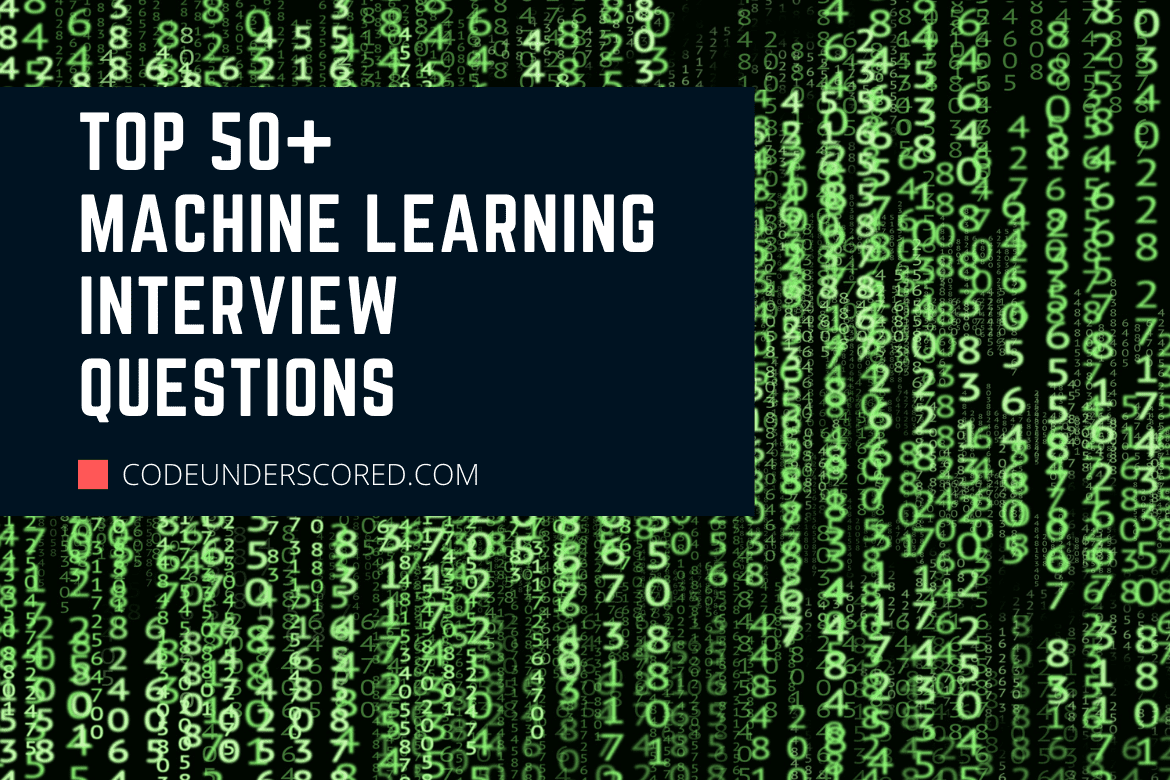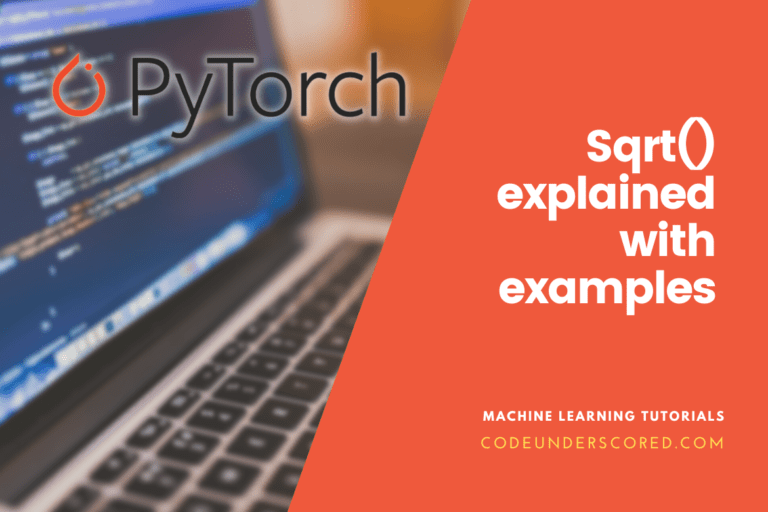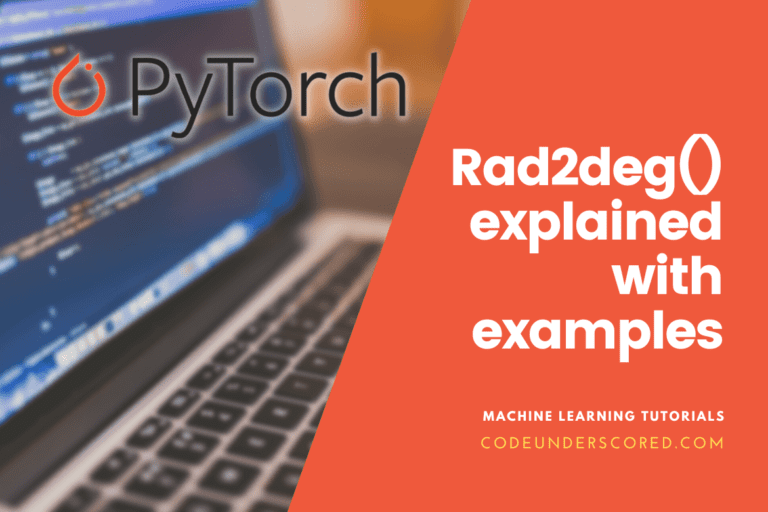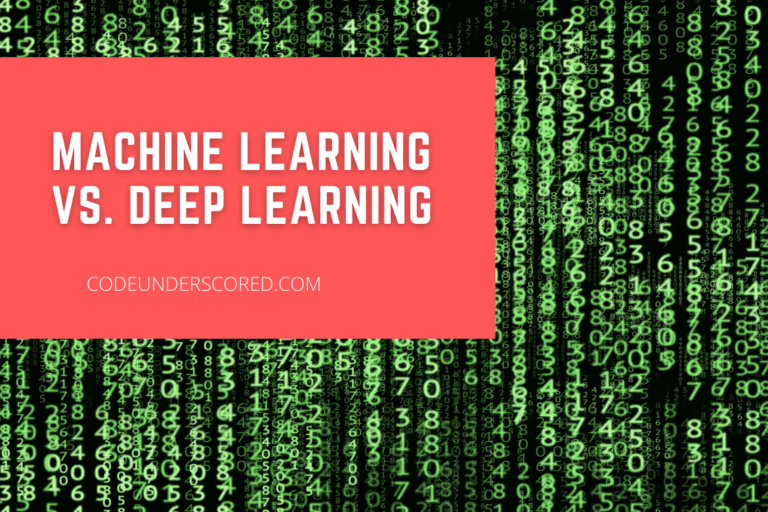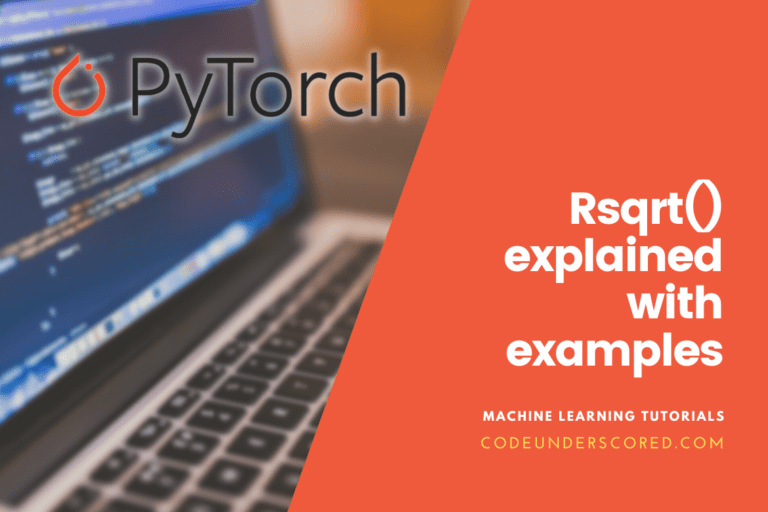Let’s take machine learning as an application of artificial intelligence that automatically gives the system the ability to learn and make some improvements without actual programming. This learning mainly focuses on specific computer programs that can access data and use it for their learning. In this article, we examine possible questions that you can be asked or can be tested in a machine learning interview. These are the questions that play a vast role in giving the interviewer an overall picture of you as a machine learning expert.
We have learned from the actual ground how these interviews are conducted and have summarized for you in detail some of the core things that you need to have at your fingertips before attending any machine learning interview. We have taken a look at these questions that are used to trip up candidates looking for this kind of job. Alongside the questions that we have selected are their answers to help you ace your interview.
Machine learning interviews are always carried out in various subcategories. To begin with, we have the algorithms and theoretical sections. Here you will have to display your actual understanding of how algorithms compare with one another and how to measure their accuracy rightly. After that, we look at the next category, your programming skills. Here the interviewee looks at your speed and accuracy when executing the algorithms and the theoretical part. Next, they take a look at your general interest in machine learning. In this part of general interest, you will be asked about what’s going on in the industry.
The interviewer will be seeking to know your knowledge of the current market trends in the machine learning sector. It will be a win-win situation if you keep up with the latest machine learning trends. Ultimately, there are some questions popularly known as a company or industry-specific questions. These questions are used to test your capability to transform the general machine learning knowledge into actions.
50+ Machine Learning Interview Questions
Let’s take a look at the possible questioned to be asked categorically.
Question 1: Explain how a ROC curve works
Answer: The ROC is a graphical representation of the difference between true positive and negative rates at the various outlets. It shows the trade-off between the TPR and FPR. Better performance is indicated by curves closer to the top left corner.
Question 2: what is the trade-off between bias and variance?
Answer: bias is a fault or error that comes about as an erroneous supposition in the algorithm you are using. This can lead to under-fitting data from the model, making it even hard to have higher accuracy. In contrast, the variance is a fault due to too much complexity in the algorithm in use. This leads to your algorithm’s high sensitivity in your training, which has a high chance of leading your model to over-fit the given data. You will be carrying a lot of auditory sensation or relative noise from your training data for your model to be useful for your test data.
The bias-variance decomposition significantly constitutes studying fault from any algorithm by adding the bias plus the variance and a little bit of fundamental error due to the noise level in the underlying data set. The simplest way to get the optimally reduced error is to trade-off bias and variance. Otherwise, you will lose bias and get some variance if you make the model tangled and add more variables.
Question 3: What is the difference between supervised and unsupervised machine learning?
Answer: if we look at supervised kind of machine learning, it is mandatory to have labeled training data. For instance, you will need to label the data you will use to train the model in regression problems. On the other hand, unsupervised learning does not require the exact labeling of data.
Question 4: Define Precision and recall
Answer: In other words, recall is known as the true positive rate. Here, the quantity of positives claimed by your model is contrasted to the actual number of positives present. Precision means estimating the number of accurate positives your model affirms than the number of positives it claims. Another name referring to the same is the positive predictive value.
Question 5: How is KNN different from k-means clustering?
Answer: K-actually refers to an unsupervised clustering algorithm, whereas K-nearest Neighbors is a supervised classification algorithm. The mechanisms may seem to look alike but in a real sense, what it means is that for K-Nearest Neighbors to function, you require a labeled data that you need to categorize an unlabeled point into, thus, the nearest neighbor part. Therefore, K-means means clustering only, and it needs a set of unlabeled points and a threshold.
The algorithm will take unlabeled points and learn how to clump them into groups generated from a mean computed between the mean of distance between different points.
“K” in K-means represents the count of clusters from which the algorithm is making attempts to learn from the data or to identify. On the contrary, “K” in KNN represents the nearest neighbors for classification or prediction when the variables are either continuous or depict regression.
Question 6: Why is “Naive” Bayes Naive”?
Answer: Bayes naive is regarded as “Naive” since it emulates assumptions that are virtually impossible to be looked at or rather seen in real-life data despite its practical applications, especially in text mine-laying. The conditional quantity is calculated as the unclouded product of the individual probabilities of components. This displays how independent features are, which could probably be a condition that has never been achieved in real life.
Question 7: What is a suitable difference between L1 and L2 regularization?
Answer: Here, L1 regularization is more binary or relatively sparse, which means it has more variables that are either assigned 1 or 0 binary numbers while L2 spreads errors among all the terms. As L2 corresponds to Gaussian prior, L1, on the other hand, does a correspondence to a setting Laplacean proceeding on terms.
Question 8: Mention your favorite algorithm and state them in about 45 seconds.
Answer: The interviewer gives you such a question to gauge your understanding of how you can relay information or your communication skills. They also look at how complex your communication is, not forgetting your ability, to sum up or summarize speedily.
What’s vital at this stage is to effectively explain different algorithms that a seven-year-old can grasp the point quickly.
Question 9: state the difference between type I and type II error
Answer: Type I error amounts to a false positive, while type II error falls under the false-negative category. An instance of type I is like claiming something has taken place when in a real sense, it has not. On the other hand, type II error briefly means claiming nothing is happening when it is happening.
A simple way to comprehend this is to compare type I as telling a man that he has a monthly menstrual flow, and type II means you are telling a woman that she does not have a monthly menstrual period.
Question 10: mention the difference between a discriminative and generative model?
Answer: The discriminative model imitates the eminence between different data categories, while a generative model will imitate or instead learn from data types. In contrast, the generative models will surpass the discriminative model on classification tasks.
Question 11: vividly explain deep learning and how it is compared with other machine learning algorithms.
Answer: In this case, we take a look at deep learning as a subset of machine learning that is generally concerned with neural networks. It breaks down the neural networks specifically. It mostly handles back-propagation and certain principles from neuroscience to more accurately model larger sets of semi-structured data. Therefore, deep learning typifies an unsupervised learning algorithm that studies data representation through neural networks in generic knowledge.
Deep learning is outstanding in detecting features because it finds inspiration from the human brain.
Meanwhile, machine learning algorithms refer to organized procedures for accepting data, learning from a wide range of data, and subsequently applying what they have learned to make informed conclusions on various aspects, for example, in modern medicine.
Question 12: What is a Fourier transform?
Answer: Fourier is a tool used in image processing. Therefore its primary function is to decompose an image into its sine and cosine constituents. In other words, it is used as a method to aid in disintegration with generic functions into deposition of conformity functionalities. It also transforms a signal time to a frequency domain, which acts as the most common way to do audio signals extractions to other time series, for instance, sensor data. The tool is used in various applications, for instance, image analysis, image filtering, and image repair.
Question 13: How is a decision tree pruned?
Answer: In machine learning and data mine-laying, the pruning technique is linked with decision trees. Pruning here reduces decision trees’ size by removing parts of the tree that do not provide power to assorted instances. Reduced error pruning can be the simplest version to help replace each node.
Question 14: Between model accuracy and model performance, which one is important to you?
Answer: The question here looks at your understanding of the machine learning model performance. Some models have higher accuracy in some instances, but in contrast, they perform even worse. It has to do with how model accuracy is only a set of model execution. If we look at the instance of one trying to detect a fraudster in a more extensive population set, an accurate model is likely to be used than the predictive model.
Such questions in the interview will help you understand that you are aware of model accuracy as an inspiration to model performance.
Question 15: What is the F1 score? How would you use it?
Answer: F1 score is just a model’s performance. Just take it as a weighted average of the Precision and recall of a model. The results come in as the best, and 0 come as the worst.
Question 16: Explain how you can handle an imbalanced dataset
Answer: If you have been given a test to group some data from two or more classifying categories and find that one of the data falls to a percentage of approximately 89%, you lack accuracy in your work since you lack the predictive power of the other category.
Below are some of the tips to help you in such a situation
- You can change the algorithm altogether in your dataset
- You can take a resample of the dataset
- You can also collect more data to even the imbalance.
Q17: give ways that can help you know that you are not overfitting with a model
Answer: there are three chief ways to overcome overfitting:
- Use of cross-validation proficiency such as k-folds.
- You can also utilize some other techniques, such as LASSO, that penalize certain model parameters.
- Another swift way is to keep the model simple, automatically reducing variance by taking fewer variables and parameters. Therefore, it will remove some data noise.
Question 18: What are the examples of supervised learning and those for unsupervised learning?
Answer: The three main things an interviewer expects to hear in this question include clustering, classification, and regression. They form the basic and also the most popular Machine Learning.
In the case of supervised learning, regression and classification form excellent examples. Regression is applicable in scenarios like vehicle companies wishing to get sale predictions for the subsequent year based on the previous year’s activities and transactions. This form of machine learning is typically linear regression.
On the other hand, decision tree classification is essential when companies, for instance, those dealing with credit cards, can keep track of a client’s purchasing history and are in a position to flag fraud when something out of the normal happens. For instance, banks can use email alerts for verification if they suspect the nature of a transaction that is about to happen.
The clustering technique requires no prior history data and is thus an unsupervised learning method. A case at hand is the filters for emails that analyze various incoming emails and classify them as legit emails or spam mails.
Question 19: While building a DL model and during training, you realize that the accuracy level decreases after a specific number of epochs. State the problem and explain how you will go about fixing it?
Answer: In this question, the interviewer seeks to know if you are well acquainted with over-fitting. First, is your need to demonstrate to the interviewer how vital the model’s complexity is concerning the dataset provided? Then secondly, showing that you understand model complexity in terms of the neurons and the number of layers contained.
Also, mention that the model could be learning the exactness of the respective dataset’s characteristics rather than mastering its features. This is what amounts to overfitting.
The problem’s solution will vary depending on the exact problem identified though dropout regularization and early stopping are ideal solutions. In the latter case, all you are doing is stopping the model when you start seeing a consistent drop in the accuracy levels. However, you are doing away with either some nodes or some output layers in the former case. The resultant effect is capturing the needed characteristics using the nodes left. These nodes mostly have to do more work to attain the expected improved results.
Question 20: Explain a confusion matrix and state whether it is used for supervised or unsupervised learning?
Answer: Confusion matrix finds application in supervised learning models for the sole reason of assessing the performance of the given model. However, it is not used, unsupervised models.

The four outcomes of a model name, real positive, false positive, true negative, and false negative, can easily be presented using a confusion matrix. Subsequently, we can effectively calculate Precision, accuracy, and recall from the confusion matrix.
Question 21: State how to assess your supervised machine learning model in respect to recall and Precision
Answer: In recall, we center on knowing the correctly classified positives out of the total number of positives. Here, False Negative critical to the desired output. Such a scenario is when an online transaction platform like PayPal predicts as not fraudulent when it is. In response, PayPal should develop a system that would counter fraud by decreasing the FN, leading to an increase in recall.
Recall
In Precision, false positive is critical to the output. The concern is the number of actual positives against the number of times the model indicated positive. To get higher Precision, you need to reduce the FP.
Let me illustrate.
Precision
In essence, if my company intends to invite potential customers for a site visit, there is no need to ask clients who are not interested in the land. In this case, a false positive arises if the customer receiving the invite does not show up for the site visitors since the prediction indicated that they would show up.
Question 22: State the curse of dimensionality and the solution
Answer: The curse of dimensionality occurs when the model possesses so many features that it becomes tough to extract and learn the features. Too many features risk causing over-fitting in the model, especially when the observations are insufficient.
The more the number of dimensions, the volume of the data you need to work on is very high, just as the case is searching for a coin in a line against searching for it in a field.
Further, it isn’t easy to cluster the resultant observations. This lack of ability to derive meaningful clusters results from the excessive dimensions that complicate the datasets’ observations.
Principal Component Analysis or simply PCA is key in solving this case. The approach is one of unsupervised machine learning. It seeks to retain information as much it is possible while at the same time making attempts to minimize the number of features. Having the original features and having no correlation with each other is key. Finding these components is, therefore, the primary approach in this method. Also, note that their constraining is such that the initial components are responsible for the more significant variability in the data while the second components follow suit.
Question 23: What do you understand by a models’ learning rate?
Answer: In establishing an epoch’s step size, we use a tuning parameter when training the model. This is what we call the learning rate. Depending on the estimation of the given error, the step size can either be slow or faster, impacting how the neurons’ weights will be updated. When you are experiencing frequent and quick updates of the mode’s weights, then the learning rate is high. However, it can come with its challenges.
A case in hand is resultant faster convergence, which can result in the error’s true minima overshooting, which in other terms refers to an erroneous model that is pretty fast.
On the other hand, when the model weights experience slow updating, convergence’s overall time becomes long with low minima true error. This is a low learning rate whose overall performance is slow yet more accurate than before.
Question 24: What are Parametric models?
Answer: Parametric models are models whose number of parameters is known. This is essential when predicting new data using a model—for instance, logistic regression, linear regression, and linear SVMs.
Question 25: What are Non-Parametric models?
Answer: Non-parametric models are models whose number of parameters is unbound. By so doing, it allows for more flexibility. The examples of non-parametric models consist of K-nearest neighbors, topic models, and decision trees.
Question 26: Differentiate between stochastic gradient descents from gradient descent?
Answer: Besides both methods being involved in evaluating parameters versus data so to make the necessary adjustments for identifying parameter’s set whose aim is to minimize a loss function, gradient descent involves evaluation of the entire training samples for the given set parameters to get the solution through taking significant, slow steps. On the other hand, stochastic gradient descent evaluates only one training sample for the parameter’s set before running the update. The solution is similar to taking small, quick steps.
Question 27: At what point would you consider using Gradient Descent over Stochastic gradient descent?
Answer: Gradient descent is more suitable for small datasets, while stochastic gradient descent is ideal for larger datasets. This is because whereas stochastic gradient descent has a faster convergence when the dataset gets more extensive. In contrast, the gradient descent has a minimal functional error, which is much better than that of the stochastic gradient descent. However, this is from a theoretical perspective.
But in practice, most applications have stochastic gradient descent in play. The latter is tied to its capability to work faster, better memory efficiency for datasets that are larger while at the same time reducing the error function.
Question 28: State and explain the different types of machine learning?
Answer: The three main types of machine learning include unsupervised, supervised, and reinforcement learning.
In supervised learning, you provide the algorithm with labeled data. The algorithm will then learn from it and find a way of solving similar tasks in the future. Essentially, the algorithm learns how the problem was solved and then adapts the same approach to solve identical problems. That is the exact way online payment platforms develop a habit of learning your behaviors and can identify legit transactions from transactions that are not.
Unsupervised learning is where the algorithm is provided with data that is not labeled. In this case, the algorithm has no prior experience or knowledge of how the problem should be solved. Using its means, the algorithm has to derive insights and meaning from the data. For instance, in money lending applications, the K-Means algorithm is applied to cluster customers based on their credit cards and establish the most suitable offers for the different clients.
Reinforcement learning is slightly varied from the previous two learning approaches. This is where the algorithm uses its experience through the application of punishment and reinforcement. It is more of an agent interaction with the environment through actions and consequently realizes rewards and punishments.
This learning model has no pre-defined data, no supervision during training, and approaches the problem by following the trial and error method. Also, note that it is known to handle reward-based kind of problems.
Take an example of a self-driving car where punishment is awarded if it moves away from the target and it is rewarded for a positive move towards the desired agent. An example of reinforcement learning algorithms includes SARSA & Q-learning.
Question 29: Explain your understanding of selection bias
Answer: When carrying out an experiment and you realize that one of the sample groups is selected often than the others in the group, then the situation is best described as selection bias. It is the error that arises statistically when there is biasness in choosing the samples in the experiment. This is often a cause for false conclusions.
Question 30: Differentiate between deductive and inductive learning?
Answer: Both deductive and inductive learning are approaches for learning except that one is the inverse of the other. Whereas deductive learning involves forming observations from conclusions, inductive learning, on the other hand, rides on concluding by using observations.

Question 31: Which one is preferable. Many false positives or a lot of false negatives?
Answer: When machine learning is applied to detect spam emails, it is risky to have a false positive since there will be scenarios where critical mails may be classified as spam when they are not.
Also, in medicine, having a false negative can be very dangerous. It depicts a case where results from a sick patient do not cause any health complications when they are very ill indeed.
In summary, two key players are vital here. First are the domain and the nature of the question that you want to solve the problem.
Question 32: Choose between model performance and model accuracy. Justify your answer.
Answer: Model performance is a superset of model accuracy. Thus, the better the model’s accuracy, the better the overall performance of the model. This, in return, means that when the model’s performance is high, then the overall accuracy of the model is higher.
Question 33: Differentiate between entropy and Gini impurity in Decision Trees?
Answer: Both the metrics are vital when deciding to split a tree. However, Entropy is responsible for the calculation of no information. By creating a split, you can get the respective entropies’ differences. Consequently, this gives information gain whose responsibility is to minimize the output label’s uncertainty levels. Contrary, when dealing with a random sample, the probability of correct classification is represented by Gini measurement. Usually, it happens when you select a label randomly based on the branches’ distribution.
Question 34: Categorically differentiate between Information Gain and Entropy?
Answer: Whereas Entropy the messiness in the target data, Information Gain’s foundation is on a decrease in Entropy when the respective dataset split is on an attribute. The closer to the leaf node, the more it increases, whereas it decreases in Entropy.
Question 35: Explain the difference between multicollinearity and collinearity
Answer: When the number of predictor variables inter-correlating exceeds two, then it refers to multicollinearity, whereas in collinearity, two predictor variables correlate in multiple regression.
Question 36: Explain Cluster Sampling
Answers: In intact groups whose population is defined and have characteristics that would be generally said to be similar, the process of choosing one of these groups randomly is what is called cluster sampling. When the sample probability involves the sampling unit as an element’s cluster or a collection, it is referred to as the cluster sample. For instance, in clustering all the managers in several companies, the managers represent respective elements, whereas the companies represent the clusters.
Question 37: Illustrate A/B Testing
Answer: When checking for a variable that is most suitable for a specific data sample, a comparison is made on the two selected models, each using a different predictor variable. A/B testing is useful in this case. In a broader perspective, it is a hypothesis involving an experiment randomized having variables B and A. This hypothesis is statistical.
For example, we A/B testing is useful when comparing two different models of an e-commerce platform to ascertain which of the models makes the finest product recommendation’s to the customers. These two models used for testing have varied variable predictors.
Question 38: Explain the use of Box-Cox transformation
Answer: Box-Cox transformation is responsible for data transformation, thus normalizing the distribution process. From a generic perspective, it is simply power transformation. It finds use invariance stabilization, which involves the elimination of heteroskedasticity. Further, it is key in the normalization of the distribution. For instance, log-transformation is equal to Box-Cox transformation at the point when the latter’s lambda parameter is zero.
Question 39: State the three main approaches to reducing the dimensionality
Answer:
1. Collinear features removal
2. ICA, PCA, and carrying out additional approaches of reducing dimensionality using algorithmic means.
3. feature engineering and combination of features
Question 40: State three preprocessing techniques with data when handling outliers?
Answer:
1. Use Box-Cox to reduce skew through transformation.
2. Threshold capping through Winsorize
3. Additionally, only engage in outliers removal if there are any traces of anomalies or errors in the measurements.
Question 41: What amount of data should you set for test, training, and validation?
Answers: Despite there being no definite answer for all the problems, there is a need to learn to strike a balance when setting your dataset.
Pertinent guidelines to always keep in mind include unreliable model performance projections when the set used for testing turns out to be very small. In fact, such cases lead to an anomaly called high variance. Such is the case with the model parameters when the training set is also tiny.
However, experts suggest using 80/20 for training and test splitting over various experiments in the field, respectively. The latter data on the training set can further be broken down to accommodate both training and validation. In the case of cross-validation, the data is broken down into different partitions depending on your selection—for instance, 10-fold cross-validation.
Question 42: What are the chances of overfitting when you split data into training and test?
Answer: The answer is yes. When you experience mistakes such as tuning the model again or new models getting trained on various parameters, this usually happens just after observing the latter’s performance on the set for the test.
Thus, in this scenario, the cause of over-fitting is the selection process of the model. Ensure only to try the test set after readiness to settle on the last selection.
Question 43: State the advantages and disadvantages of decision trees?
Answer:
Decision trees have the following advantages:
1. it has a minimal number of parameters that need tuning
2. They are simple to interpret
3. They are non-parametric, which relates to being robust compared to the outliers.
Disadvantages
1. They are susceptible to over-fitting through booted trees, and random forests are vital in addressing the issue.
Question 44: Explain how to select a classifier using the size of the training set
Answer: If you have a huge data set, you should target models with high variance and a low bias. Such models like logistic regression seem to do well with extensive data because they have a diverse view of the complex relationships.
However, if the set for training is small, then the ideal models involve low variance with high bias. These models overfit less, thus the suitability. An example here is the Naïve Bayes.
Question 45: State what Latent Dirichlet Allocation (LDA) means
Answer: Dirichlet denotes the distribution of many other distributions. For example, in LDA, we talk about words, topics, and documents. Where topics are, word distribution and documents refer to topics distribution. When you intend to classify documents using subject matter as the basis or intend to practice topic modeling, LDA is what you are looking for.
LDA is also a model that generatively maps a conglomeration of topics and represents them as documents. Herein, every topic has an individual distribution probability of likely words.
Question 46: State the pros and cons of neural networks?
Answer:
Pros
Deep neural networks are a subset of neural networks whose success has led to the ability to work on extensive datasets on audio, video, and images. They have complex and diverse capabilities that enable them to learn intricate patterns.
Cons
1. Deep neural networks require massive data for training for convergence purposes.
2. The hidden internal layers are not easy to understand
3. The selection of the right architecture is a nightmare.
Question 47: Explain Kernel SVM
Answer: Kernel SVM is the popular one of the Kernel methods. Broadly, these methods are a category of pattern analysis algorithms. In full, it stands for kernel support vector machine.
Question 48: State and explain a recommendation system
Answer: A recommendation system comes from the term recommender, a knowledge-based inference engine that offers advice to users of a system based on their habits. This filtering system can foretell your needs as a user, and it is all dependent on your previous patterns.
Question 49: Explain what you understand by Logistic Regression
Answer: Logistic regression is under the umbrella of algorithms called classification algorithms. These algorithms can make a binary prediction for independent variables set. The output from a logistic regression will be 1 or 0. Taking 0.5 as the threshold figure, values below 0.5 will be converted to 0, while those above 0.5 will be converted to 1.

Question 50: Explain Cross-validation
Answer: Cross-validation is a phenomenon for breaking a given dataset into smaller groups with the same number of rows. A random selection is made to set one part as the test set and the remaining sets used for training. The overall system performance is witnessed by feeding the algorithm with multiple data from the given dataset.
Cross-validation is made up of various techniques: stratified k-fold cross-validation, k-fold cross-validation, leave p-out, cross-validation, and the holdout method.
Question 51: Differentiate between Variance and Bias and Illustrate with the help of a diagram how to strike a balance between the two.
Answer: Complex models experience over-fitting while the simple models experience under-fitting because of their inability to capture as many features as is optimally needed, especially during training. However, it is not possible to minimize variance and bias simultaneously.

Key:
E – Error
Z -Zone
M-Model
The diagram above illustrates both under-fitting, over-fitting, and an optimal fit. The optimal fit or optimal model happens when the balance is between the variance and the bias. However, if the model moves towards the left side, it gets straightforward, causing a resultant increase in biasness. This is what we are calling under-fitting. But when the model moves more to the right side, the complexity levels increase, causing a resultant increase in the variance. Overall, this amounts to over-fitting.
Getting the balance between the two will involve striking a balance between the number of neurons and layers to have a situation where they are not too much or less. This hyperparameters tuning for different models determine if you are a good data scientist.
Conclusion
This article ventured into the top learning interview questions. You will find these questions in virtually any machine learning interview that you will attend. It is not by any way conclusive. However, it is a starting point for you to develop a strong foundation of the core concepts any machine learning expert is expected to know.
If you have been to any machine learning interview and do not see the questions you were asked here, kindly share them with us through the comments sections. We will be apt to answer your questions.
Note that this will also go a long way in helping other machine learning enthusiasts grow their mastery of machine learning concepts.

